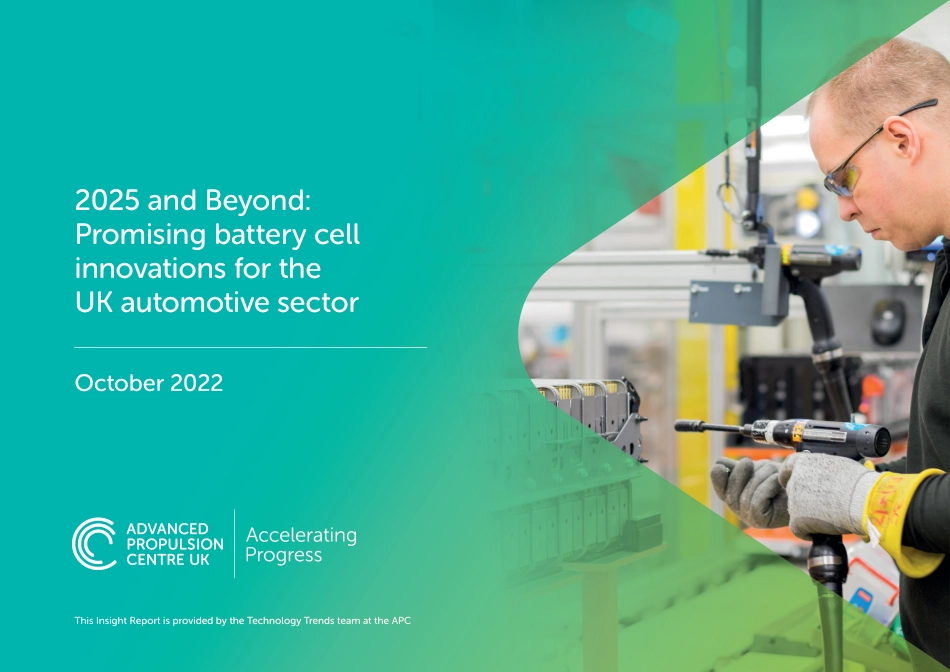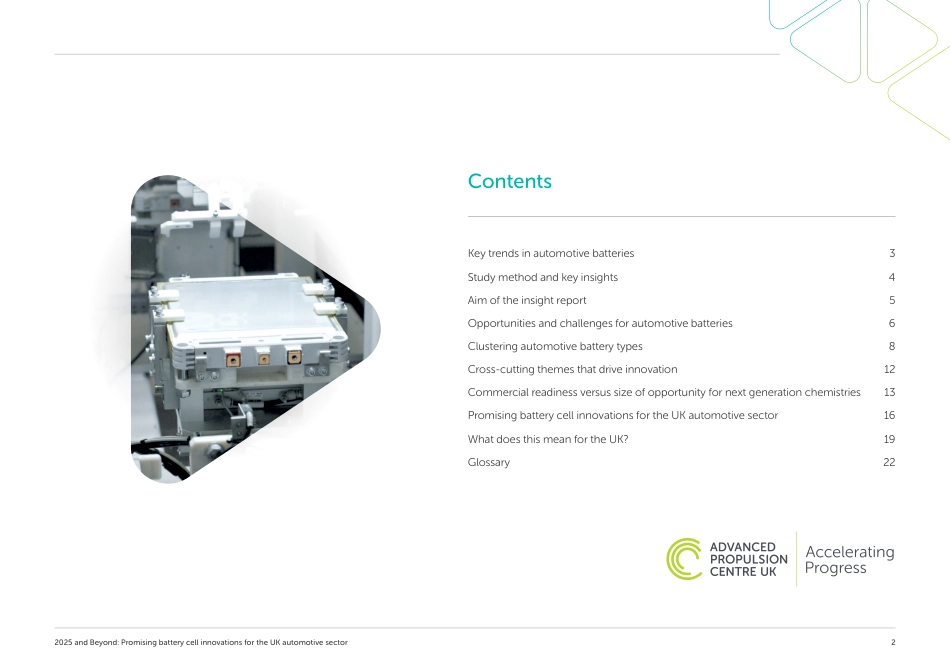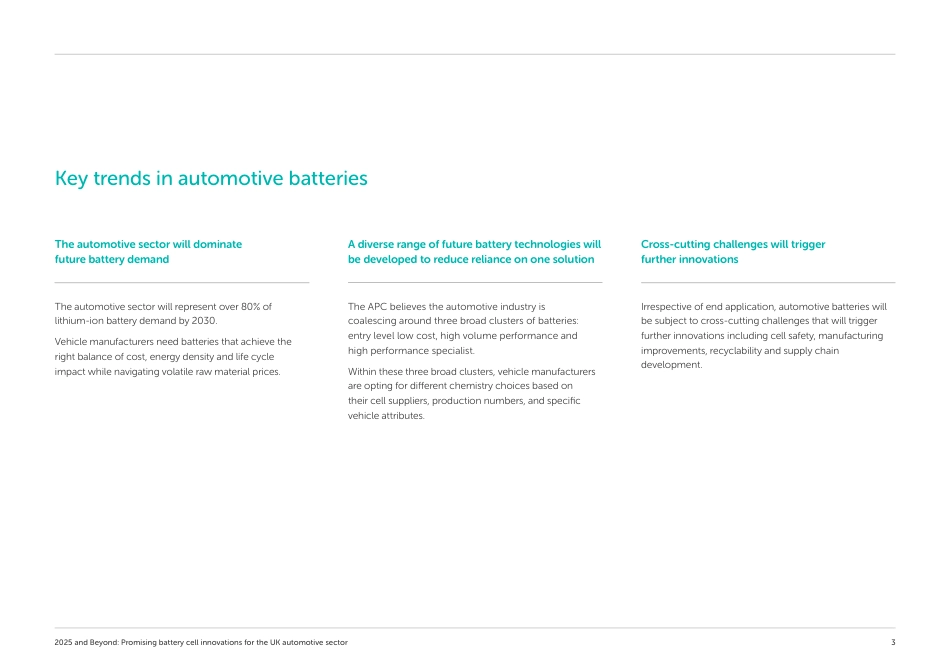2025 and Beyond: Promising battery cell innovations for the UK automotive sectorOctober 2022This Insight Report is provided by the Technology Trends team at the APCKey trends in automotive batteries 3Study method and key insights 4Aim of the insight report 5Opportunities and challenges for automotive batteries 6Clustering automotive battery types 8Cross-cutting themes that drive innovation 12Commercial readiness versus size of opportunity for next generation chemistries 13Promising battery cell innovations for the UK automotive sector 16What does this mean for the UK? 19Glossary 22Contents2025 and Beyond: Promising battery cell innovations for the UK automotive sector2The automotive sector will dominate future battery demand The automotive sector will represent over 80% of lithium-ion battery demand by 2030.Vehicle manufacturers need batteries that achieve the right balance of cost, energy density and life cycle impact while navigating volatile raw material prices. A diverse range of future battery technologies will be developed to reduce reliance on one solutionThe APC believes the automotive industry is coalescing around three broad clusters of batteries: entry level low cost, high volume performance and high performance specialist. Within these three broad clusters, vehicle manufacturers are opting for different chemistry choices based on their cell suppliers, production numbers, and specific vehicle attributes. Cross-cutting challenges will trigger further innovations Irrespective of end application, automotive batteries will be subject to cross-cutting challenges that will trigger further innovations including cell safety, manufacturing improvements, recyclability and supply chain development.Key trends in automotive batteries...



